Are There Other Types of Husky?


Reviewed and approved by the biologist Cesar Paul Gonzalez Gonzalez
It’s impossible for this dog to go unnoticed. The particular beauty of the Siberian Husky makes it one of the most recognizable and appreciated dogs in the world. However, in addition to the classic wolf-shaped canid, are there other types of Husky?
The simple answer here is that there aren’t. Other breeds, such as the Samoyed or the Alaskan Malamute, are erroneously classified as Husky types. If you go to the lists of the most important canine federations throughout the world, such as The Kennel Club or the Fédération Cynologique Internationale (FCI) it’s very easy to corroborate that there’s no other Husky beyond the Siberian Husky.
Despite this, we can still talk of “types of Husky” if we refer to certain characteristics, such as the colors of their coat or biological crosses. Here’s everything you need to know about this subject.
Husky characteristics
The origin of the Husky dog is in Russia, where dogs were bred to pull sleds and guard livestock. In spite of being considered as a working dog in the past, due to their good character they have always been great companion dogs.
Since the beginning of the 20th century, the fame of this dog reached North America, and then it began to be bred in Alaska, where it adapted perfectly due to its appropriate physical characteristics. Here it began to be used as an aid for the same jobs it had in its place of origin.
Regarding its behavior, it’s worth mentioning that it’s quite an intelligent and docile dog, which doesn’t find it difficult to learn, although it requires perseverance and work in its training. In addition to this, the Siberian Husky is affectionate, playful and friendly, so it isn’t surprising that it’s so appreciated by families as a pet.
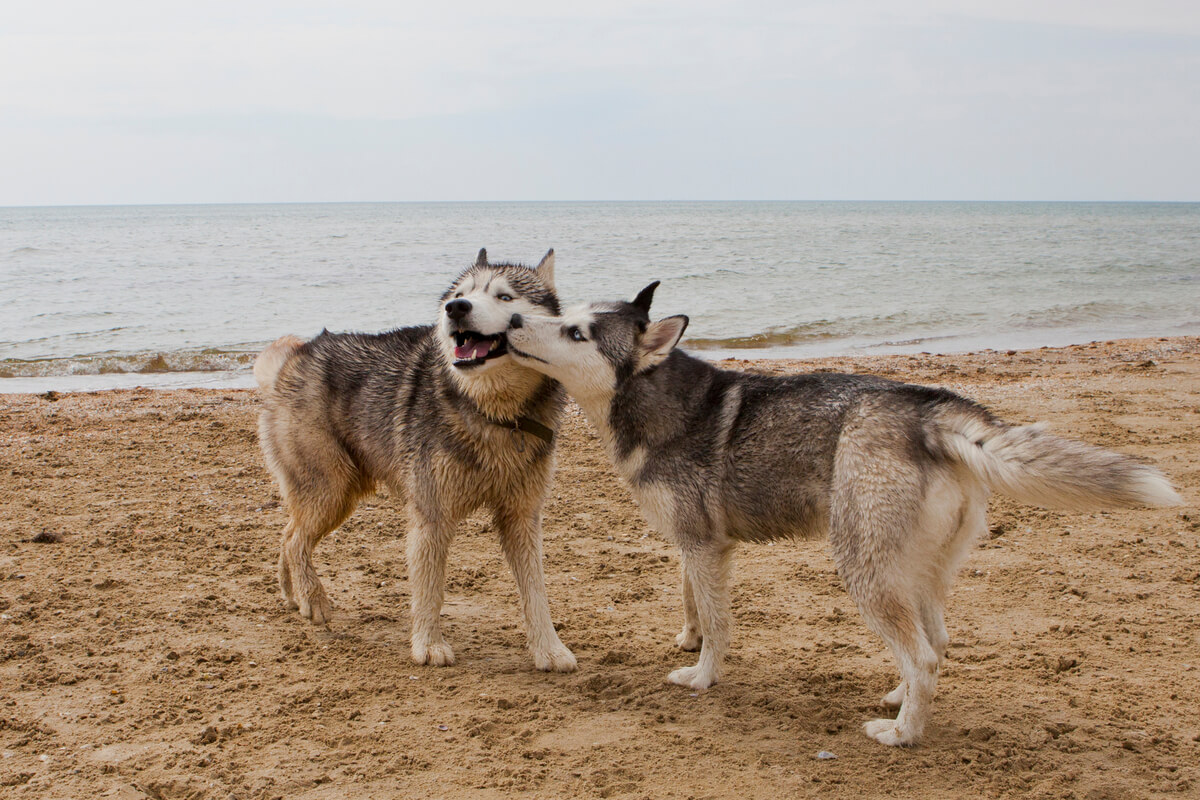
Medium size, this dog measures between 50 and 56 centimeters (20 to 22 inches) in females and a little more for males, between 53 and 60 centimeters (21 to 24 inches) at the withers. They have a very slender body and are very agile, which makes them ideal for their tasks in steep mountains and in the snow.
Undoubtedly, one of the most striking physical characteristics of the Husky is its eyes. These are almond-shaped and can be brownish in color, but those with light blue eyes or those with heterochromia are really impressive.
Finally, we can’t finish its physical description without talking about its coat, and it’s here where we can begin to differentiate between types of Husky, as the breed can have coats of very different colors, patterns, and markings.
Classification of types of Husky by coloring and markings
The most popular Siberian Husky may be the white and gray, black and white, or tricolor type. But the truth is that there are many more shades. Discover them with us.
1. Gray Husky
Curiously, within the gray Husky itself, there are 3 types of gray. These are the following:
- Gray tone: The most common, with a medium or dark intensity in the outer layer, in which you can also see some traces of “toasted” colors. The inner layer mixes silver with beige.
- Silver gray: Its inner layer is white, while the outer layer is silver or blue.
- Wolf gray: Its undercoat is beige and the outer coat has, in each hair, the agouti gene. This gene means that in the coat on the back, behind the ears and legs, you can see 2 different colors. These will be warm gray with red, beige, or cinnamon.

2. Red or copper Husky
This is undoubtedly one of the most imposing types of Husky. The coat of the upper areas of its body is made up of colors that contrast a lot with the cream or white of its lower part.
These tones are usually dark chocolate, reddish, orange, or copper. A distinction could even be made between a red Husky and a copper one, since the latter has a lighter tone, tending towards yellow or orange. In addition, its liver-colored nose is also very characteristic.
 3. Sable Husky
3. Sable Husky
In the case of the sable Husky, its undercoat is never beige. It’s always other shades such as copper, red or chocolate. On the other hand, the outer coat varies as the dog grows. At birth, the coat is dark gray, but it changes to a reddish-brown coat that ends in black tips as the dog gets older.
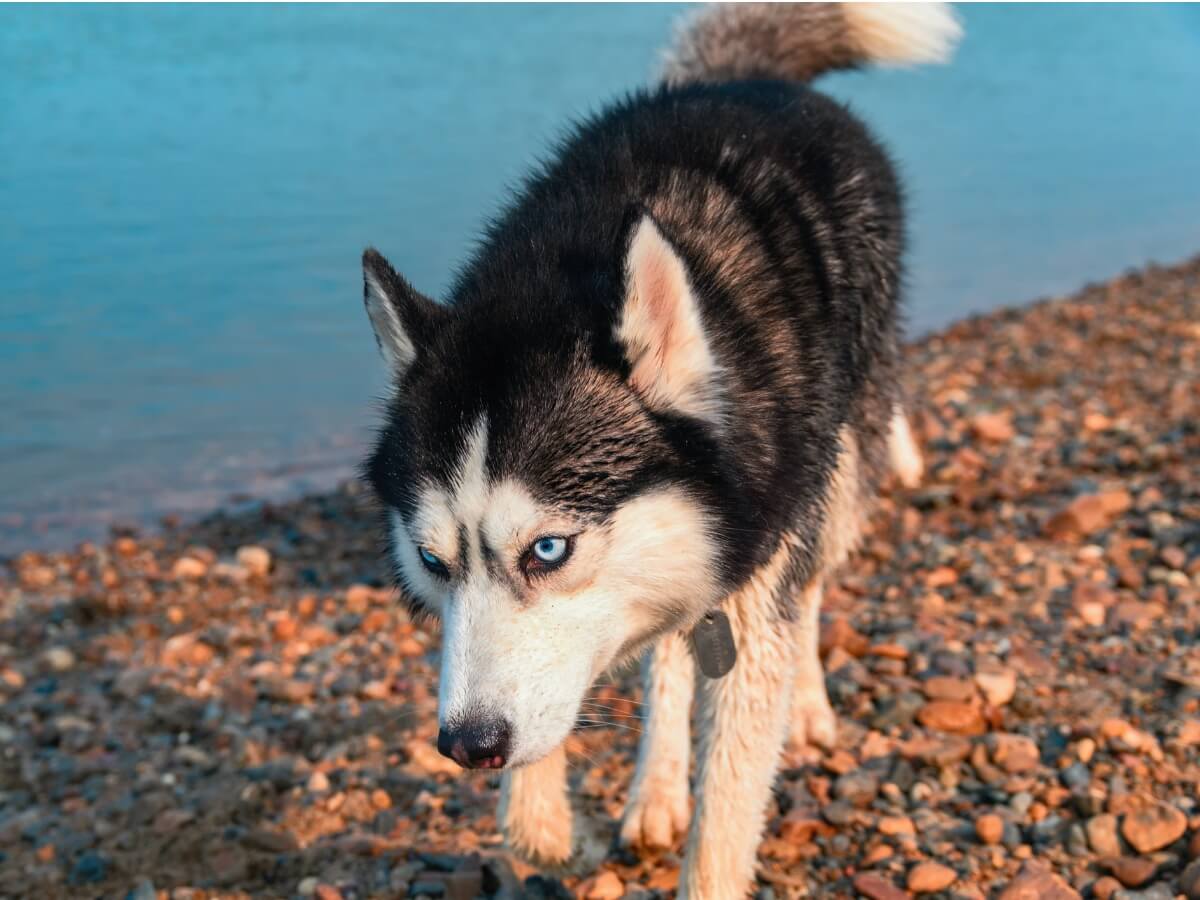
4. Pinto Husky
When we talk about a pinto Siberian Husky, we aren’t talking about a very specific color. The word “pinto” refers to a pattern, with repetitions of the shades such as black, grey, copper, red, etc. Of course, white always predominates along the front legs.
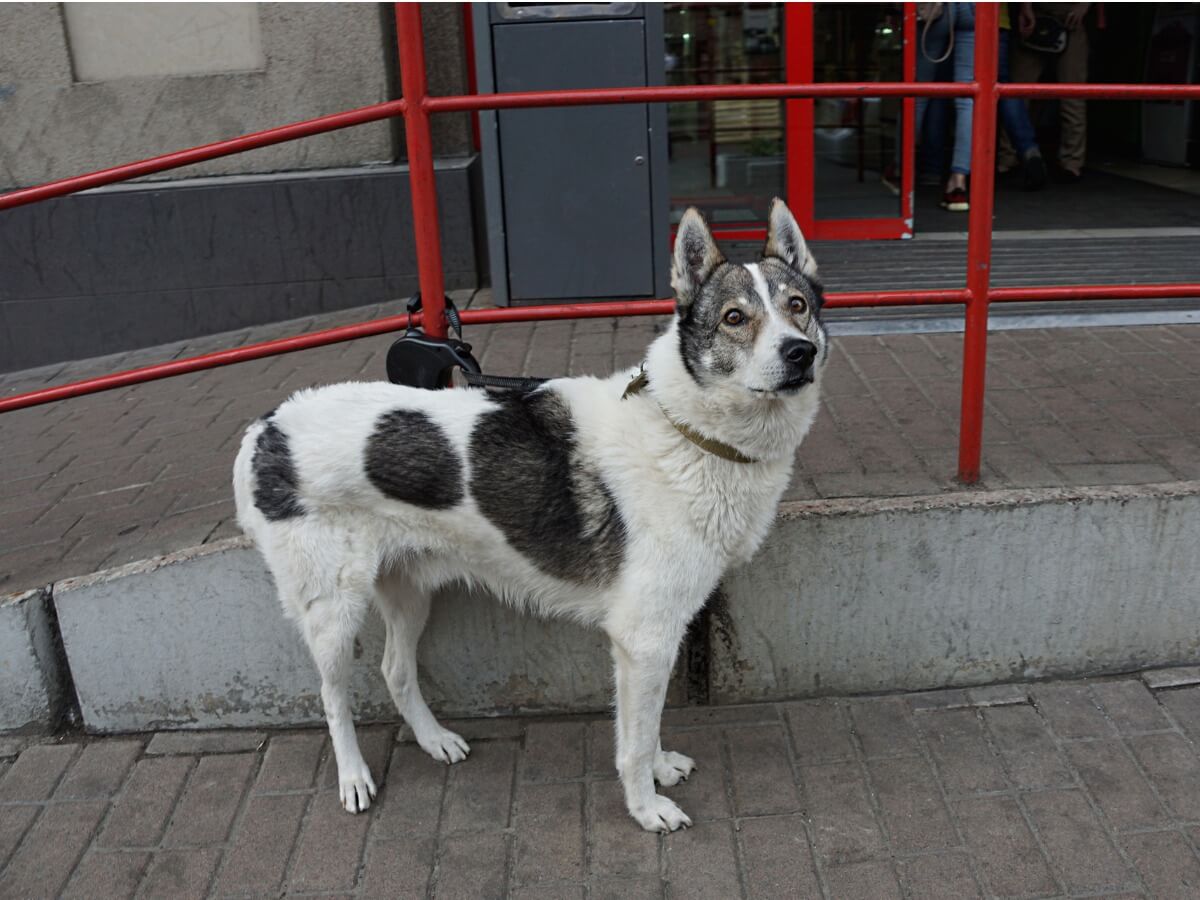
5. Agouti Husky
Of the existing types of Husky types due their different colors, the agouti is one of the least common. It’s a dog with a rather wolfish appearance, whose face seems to have a black mask incorporated. The black covers its head and goes down to its body, where it mixes with gray, red, or brown.
Due to the extension of black that starts on its face and extends, it’s known as “dirty face”. In addition, the shade expands on its paws much lower than on other Huskies. However, the undercoat shows no dilution, and is always cream-colored.
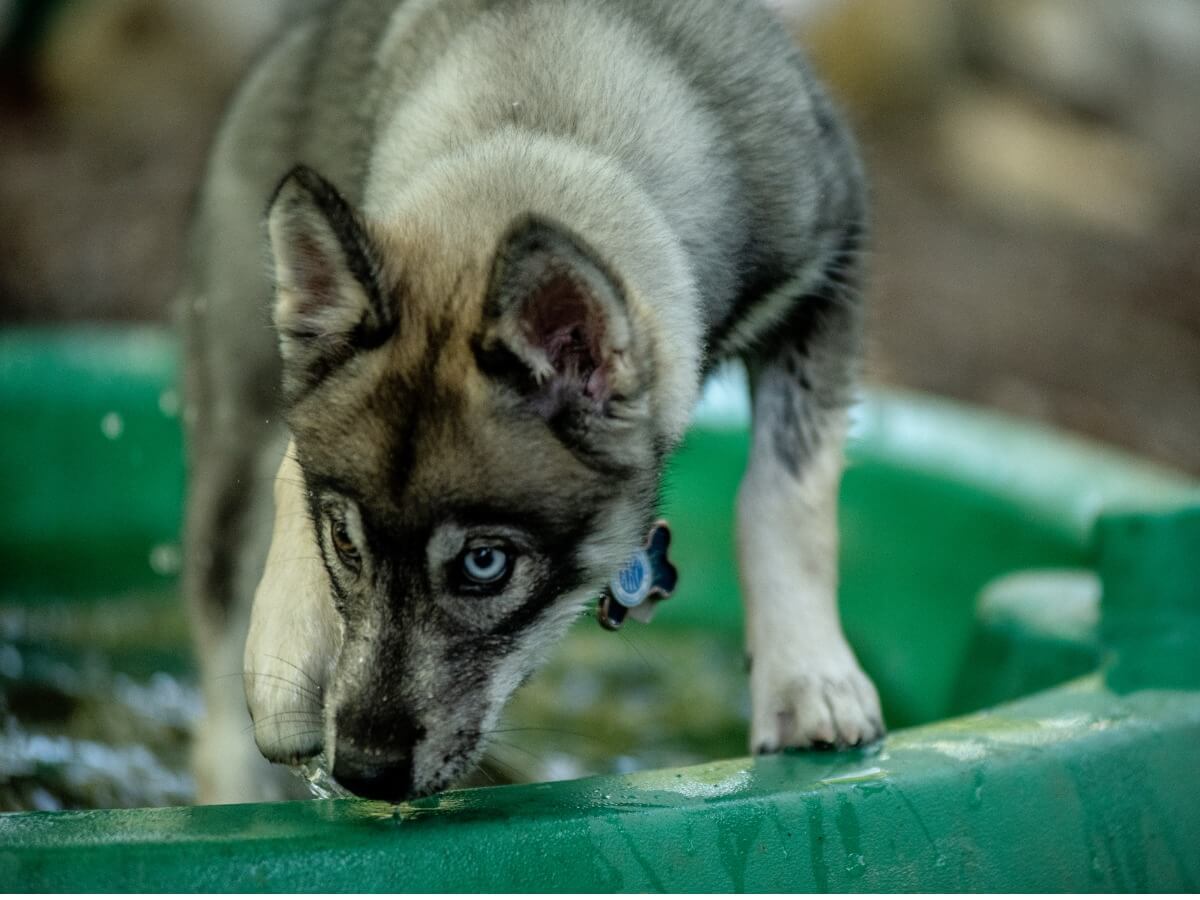
6. White Husky, one of the less frequent types of Husky
This is probably the strangest Siberian Husky to be found. Not much can be said about it, since its main and most remarkable characteristic is that they are completely white, both on their undercoat and outer coat. This clarity of their coat contrasts with their black eyes, nose, and mouth.
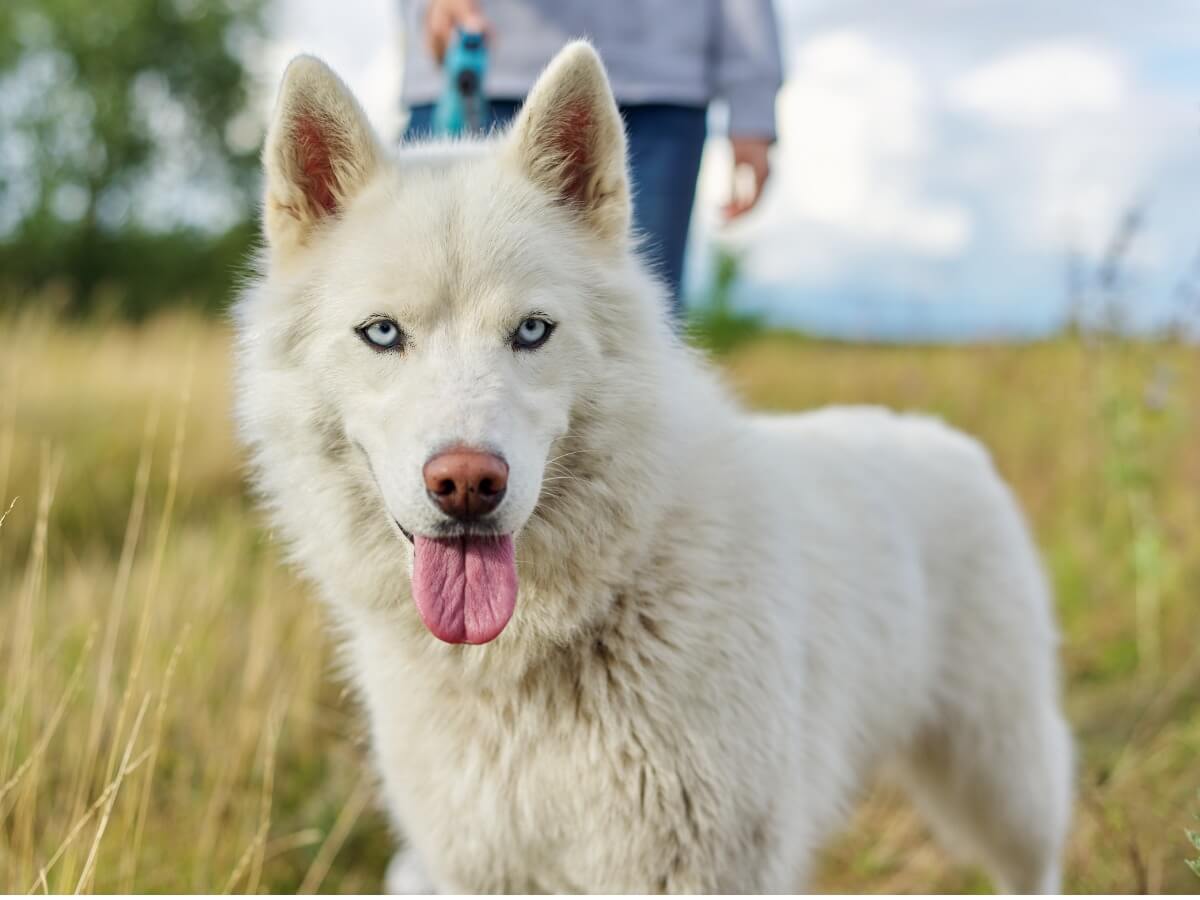
7. Black and white Husky
The outer coat of this Husky is of a powerful jet black color, although there are types that can present a certain tone known as “salt and pepper”, which gives a certain grayish appearance to its coat.
On the other hand, the inner coat can be charcoal, white or beige, or also a mixture of the three. In addition, if it spends a lot of time exposed to the sun, it can adopt certain reddish tones.
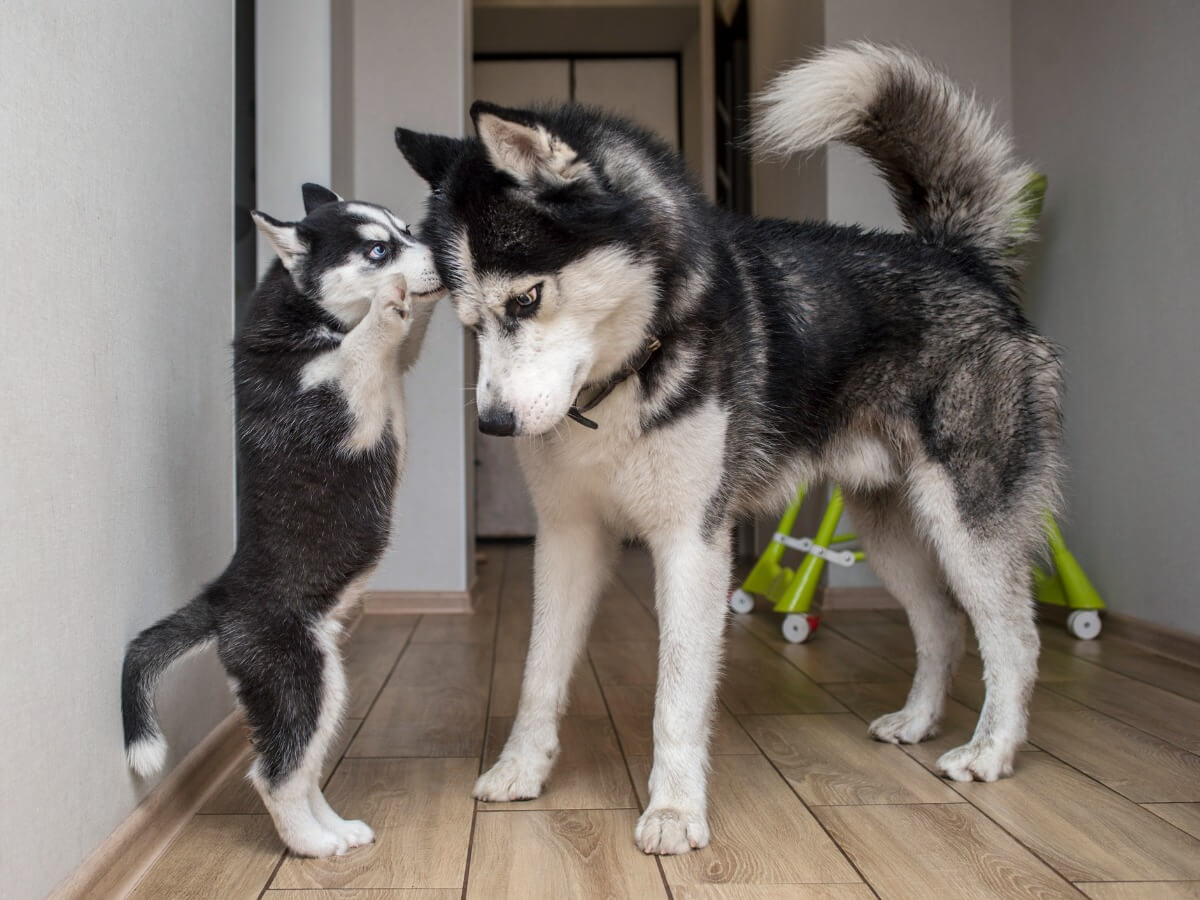
Breeds similar to the Siberian Husky
Having established that there are no other types of Husky other than the Siberian, what is clear is that some breeds of dogs have very similar characteristics to the Husky and can easily be confused with them. These dogs, besides resembling each other physically, are mainly bred in Alaska and perform identical tasks to the Husky in the snow. Let’s see what these breeds are!
8. Husky Malamute or Alaskan Malamute
The misnamed Husky malamute is considered by experts to be one of the oldest dog sled breeds. Some research affirms that its ancestors were already bred by men in the Paleolithic era.
It’s a muscular, strong dog, with a dense and rough coat, with a color combination of black, gray, and red, although there may be specimens in white. Evidently, the appearance of the Alaskan Malamute is very reminiscent of the Husky and, although it could be said that they’re close relatives, they shouldn’t be confused.
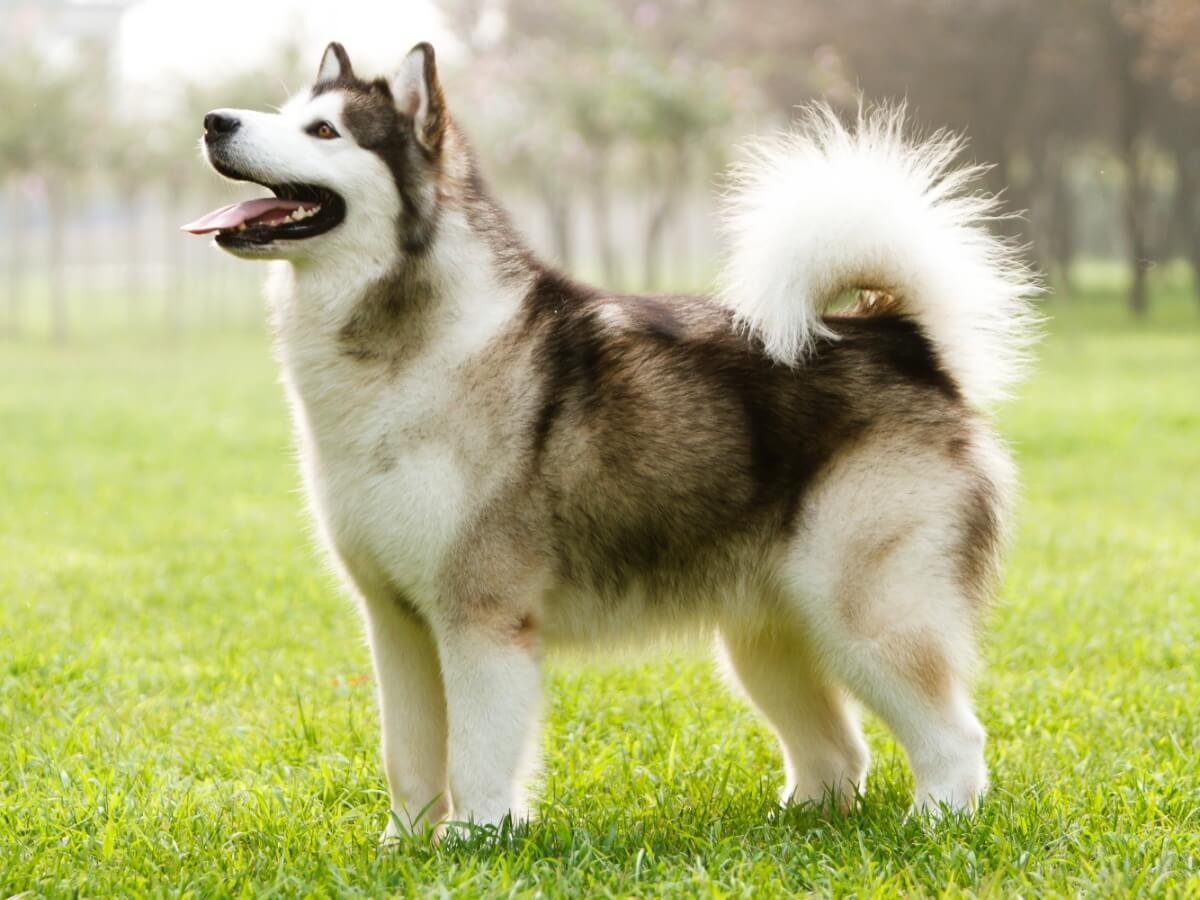
9. Samoyed
Despite being confused with the Husky, the Samoyed is a recognized breed. Its origin is in Siberia and northern Russia, where people used to shelter next to these dogs during the cold winter nights to protect themselves, thanks to their dense white coat. In addition, it was, and is, known as a great guard dog and for its hunting abilities.
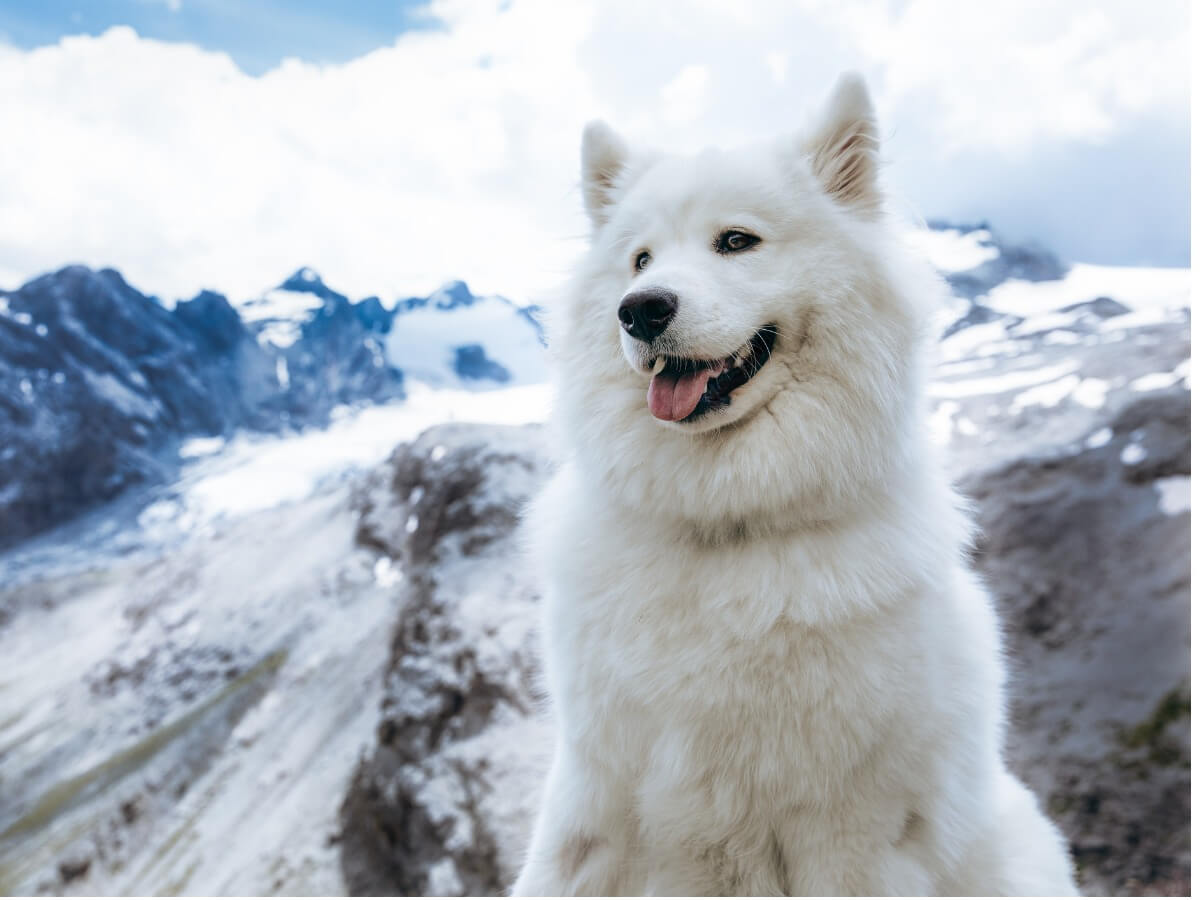
10. Canadian Eskimo Dog
This dog is also one of the most commonly misnamed as a type of Husky. However, the Canadian Eskimo dog has a genetic line far removed from this breed.
It’s bred in Canada, a region where it was used as a transport dog or as an aid in hunting. For these tasks it was greatly helped by its physical characteristics: it has a medium-sized body, but is muscular and strong. Its dense coat is white, although sometimes it has light brown, red or gray shades.

11. Labsky or Huskador
Another dog with an unofficial name, but usually used for those dogs that are mongrels, born from the cross between Siberian Husky and a Labrador retriever. This dog was developed mainly in Canada, in order to serve as a sled dog.
These crossbreeds are very energetic dogs that need a lot of daily activity. At the same time, they’re affectionate and gentle dogs.
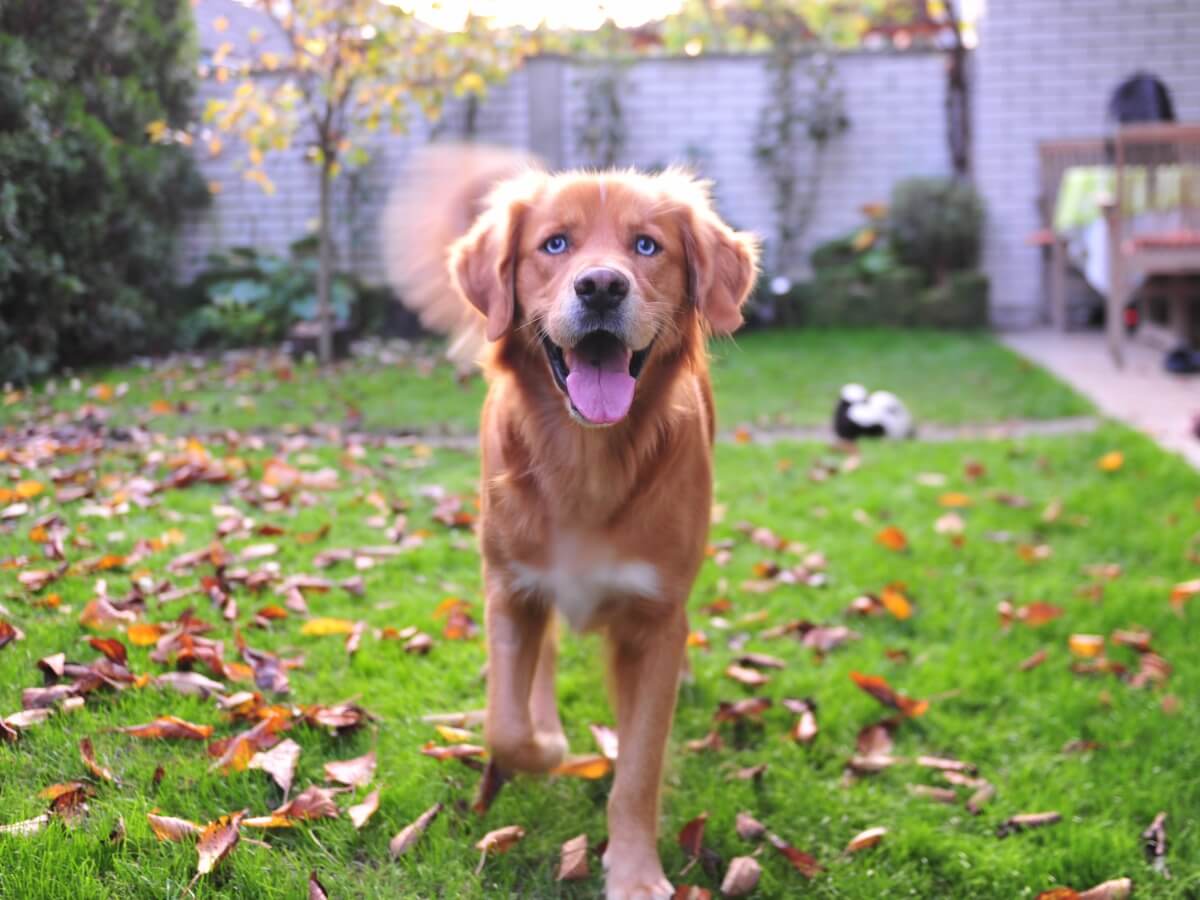
12. Alaskan Husky
The Alaskan Husky is not a pure breed, but a mixture of several breeds that live in Alaska and the Siberian Husky. It’s often used for sled racing during winter sports in the region. As for its body, it can exhibit a wide variety of colors such as gray, black, white or combinations of the above.
Contrary to the Husky, this dog’s eyes are usually brown. They have a short and very dense coat, while their bodies are more elongated and slender than the Siberian. This breed is very typical of the area, so it’s very rare to see it elsewhere. In addition, they’re working dogs that need a lot of exercise to be calm. So, they’re unlikely to adapt well to an environment other than Alaska.
13. Sakhalin Husky
This dog is also called Karafuto, named after the governor in Japan where it originated. It’s a rare breed that is on the verge of extinction, as some years ago it was reported that there were only 7 specimens alive. This has created a great conflict because there aren’t enough individuals to maintain its genetic diversity.
The Sakhalin Husky was also used as a sled dog for expeditions to Alaska or the South Pole. Their appearance is more similar to that of a spitz, but with the abundant and lush coat of a Husky. They have erect ears and their tails point upwards.
14. Pomsky
The Pomsky is a very particular dog , the result of a cross between Pomeranian and Siberian Husky dogs. It’s also known as a mini Husky, but isn’t yet officially recognized as a breed by the canine federations, although it does have a club (International Pomsky Association) that works to establish the breed standard.
It’s known as a mini Husky because it’s very similar to this dog, only that it’s slightly smaller, weighing between 4 and 14 kilos (9 to 30 lbs). In addition, among its most outstanding physical characteristics is its dense coat, which can be brown, gray, black or white, its light eyes (inherited from the Husky) and its curled tail (characteristic of the Pomeranian).
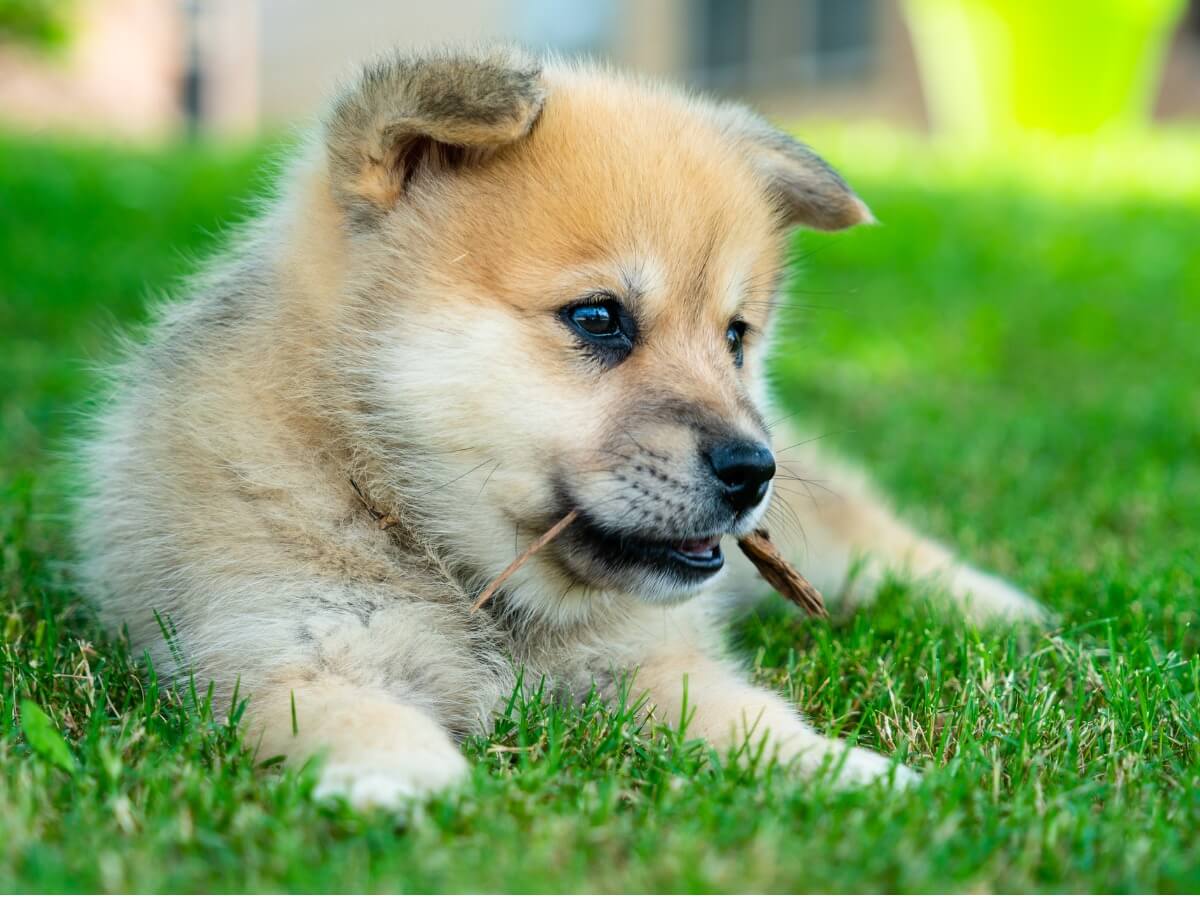
Other breeds of dogs resulting from crosses
In addition to the Husky Labrador and the Pomsky, which is the best known Husky cross with another breed, there are other dogs created by joining the genetics of the Husky with other dogs. Of course, it should be emphasized that none of them is officially recognized by the official canine federations. These dogs are the following:
- Mackenzie River Husky: Created by crossing large dogs -such as the Newfoundland or St. Bernard- with Alaskan sled dogs.
- Chusky: Mestizo dog by breeding the Husky with the Chow-Chow.
- Tamakan: The result of several crosses involving, in addition to the Husky, the German Shepherd and the Alaskan Malamute.
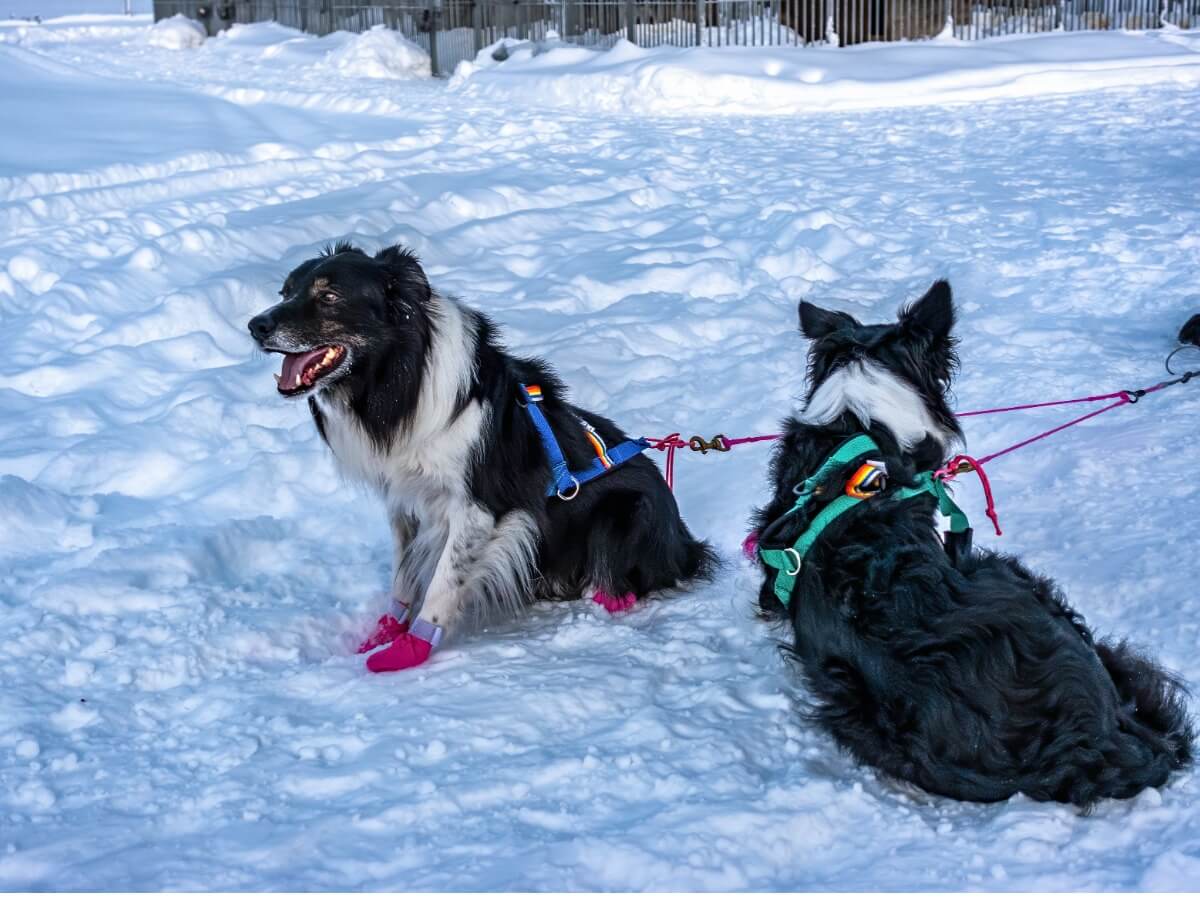
Although there’s only one type of Husky breed, it can be divided into many sub-types according to their coat and general shape. All the dogs mentioned here stand out for their beauty and loyalty, so don’t hesitate to adopt one!
All cited sources were thoroughly reviewed by our team to ensure their quality, reliability, currency, and validity. The bibliography of this article was considered reliable and of academic or scientific accuracy.
- American Kennel CLub. (s.f.). Siberian husky. Consultado el 08 de marzo de 2023. https://www.akc.org/dog-breeds/siberian-husky/
- Boivin. C. (2021). Del lobo al perro: historia de su origen y evolución de las razas. [Trabajo de fin de pregrado, Universidad Católica de Valencia]. https://riucv.ucv.es/bitstream/handle/20.500.12466/1228/Del%20lobo%20al%20perro.%20Historia%20de%20su%20origen%20y%20evoluci%C3%B3n%20de%20las%20razas.pdf?sequence=1&isAllowed=y
- Brown, S., Darwent C., Wictum, E. & Sacks, B. (2015). Using multiple markers to elucidate the ancient, historical and modern relationships among North American Arctic dog breeds. Heredity, 115, 488-495. https://www.nature.com/articles/hdy201549
- Delaware Valley Siberian Husky Rescue. (s.f.). Coat colors. Consultado el 08 de marzo de 2023. https://www.siberianhuskyrescue.org/coat-colors/
- Federación Cinológica Internacional.(s.f.). Canadian eskimo dog. Consultado el 08 de marzo de 2023. https://www.fci.be/es/nomenclature/PERRO-ESQUIMAL-CANADIENSE-211.html
- Federación Cinológica Internacional. (s.f.). Husky siberiano. Consultado el 22 de junio de 2021. http://www.fci.be/Nomenclature/Standards/270g05-es.pdf
- Federación Cinológica Internacional. (s.f.). Malamute de Alaska. Consultado el 22 de junio de 2021. http://www.fci.be/Nomenclature/Standards/243g05-es.pdf
- Federación Cinológica Internacional. (s.f.). Samoyedo. Consultado el 22 de junio de 2021. http://www.fci.be/Nomenclature/Standards/212g05-es.pdf
- International Pomsky Association. Consultado el 22 de junio de 2021. https://internationalpomskyassociation.com/
- Kanzler, K. (2010). Siberian Husky / Siberian Husky (Translation ed.). Hispano Europea.
- Mendoza, M. (2016). Secretos del husky siberiano: Perro-Obediente.com. Createspace Independent Publishing Platform.
- Pet Fashion. (s.f.). El manual del siberian husky. https://kupdf.net/download/el-manual-del-siberian-huskypdf_596e6933dc0d60f847a88e7a_pdf
- The Kennel Club. Consultado el 22 de junio de 2021. https://www.thekennelclub.org.uk/
- Trevor, R. (2021). Presence and performance of sledge dogs in Antartic Exploration, 1897-1994. https://www.researchgate.net/publication/356470021_Presence_and_performance_of_sledge_dogs_in_Antarctic_Exploration_1897-1994
- United Kennel Club. (s.f.). Siberian husky. Consultado el 07 de marzo de 2023. https://www.ukcdogs.com/siberian-husky
This text is provided for informational purposes only and does not replace consultation with a professional. If in doubt, consult your specialist.